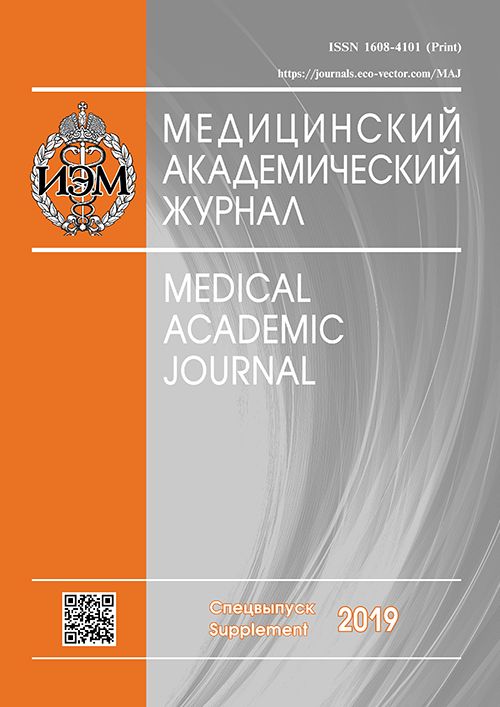NEUROENDOCRINE AND MAST CELLS OF THE SKIN IN THE AREA OF ACUPUNCTURE
- Authors: Guryanova EA1, Deomidov ES1
-
Affiliations:
- Department of Internal Diseases, Chuvash State University n.a. I.N. Ulyanov
- Issue: Vol 19, No 1S (2019)
- Pages: 22-24
- Section: Articles
- Published: 15.12.2019
- URL: https://journals.eco-vector.com/MAJ/article/view/19304
- ID: 19304
Cite item
Abstract
Objective. We studied mast cells and neuroendocrine cells of the skin of adults in the area of the acupuncture points (AP) and outside them. Material and methods. Using the Unna method (polychrome toluidine blue dye), mast cells were detected in the skin. Conducted immunohistochemical study using monoclonal antibodies to neuron-specific enolase and synaptophysin in order to identify neuroendocrine cells. Research results. Analyzed data on the distribution of mast cells in the skin in the area of the acupuncture points in an adult. It was revealed that the distribution of mast cells in the dermis and the hypodermis differs depending on the localization of the acupuncture point. Fat cells take in maintaining homeostasis and regulation of metabolism in the skin. NSE- and synaptophysin-positive cells were detected in the basal layer of the epidermis, in the area of the the muscles that raise the hair, in the area of the hair follicles; in the secretory terminal regions of the sweat glands, as well as outwards from the basement membrane of these regions between the myoepithelial cells. A part of the neuroendocrine cells is in contact with nerve waves. Expression of NSE and synaptophysin depends on AP localization. In AP of the skin of the abdomen and upper limb, a more pronounced expression of NSE and synaptophysin is observed than at the acupuncture points of the skin of the face. The expression of NSE in the structures of the skin in the area of the acupuncture points is more pronounced than the expression of synaptophysin. In the dermis revealed structureless spaces surrounded by mast cells, nerve fibers, blood vessels.
Keywords
Full Text
About the authors
E A Guryanova
Department of Internal Diseases, Chuvash State University n.a. I.N. Ulyanov
E S Deomidov
Department of Internal Diseases, Chuvash State University n.a. I.N. Ulyanov
References
- Korneva EA, Perekrest SV. The interaction of the nervous and immune systems in health and pathology. Medical academic journal. 2013;13(3):7-17. (In Russ.)
- Quatrini L, Vivier E, Ugolini S. Neuroendocrine regulation of innate lymphoid cells. Immunol Rev. 2018;286(1):120-136. https://doi.org/10.1111/imr.12707.
- Efremova OA, Guryanova EA, Lyubovtseva LA, Leonova LK. Morphological analysis of neuroendocrine cells of the skin and mucous membrane of the paranasal sinuses in normal and chronic polypous rhinosinusitis. Bulletin of the Chuvash University. 2011;3:341-347. (In Russ.)
Supplementary files







